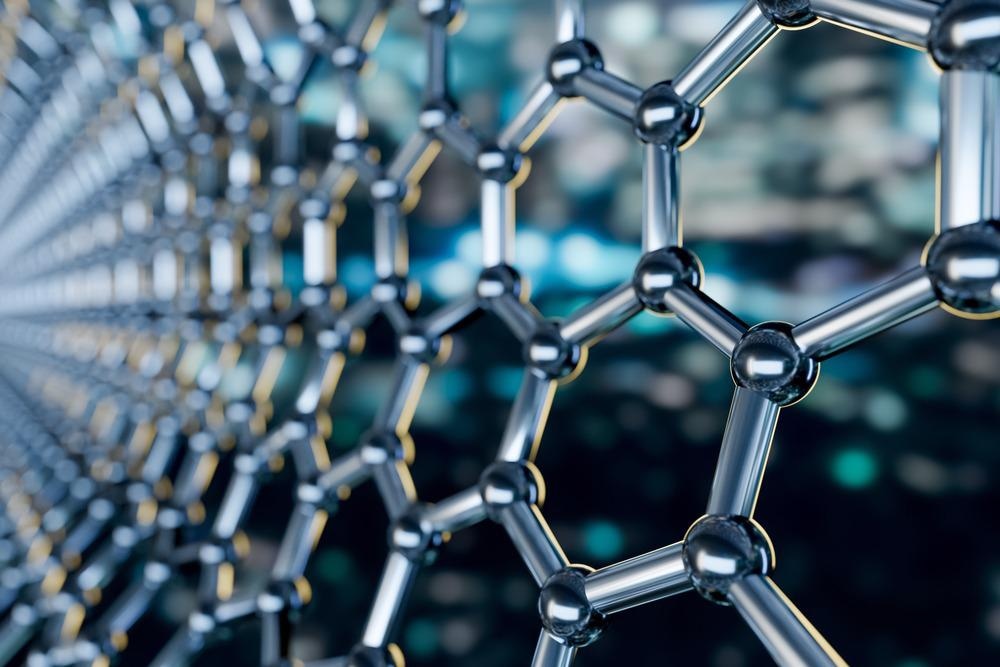In a study published recently in the Journal of Energy Storage, four distinct simple and cost-effective production processes were presented for generating graphene nanostructures with high packing density suitable for supercapacitors.

Study: Graphene fabricated by different approaches for supercapacitors with ultrahigh volumetric capacitance. Image Credit: Production Perig/Shutterstock.com
Importance of Dependable Power Devices
The impending loss of fossil resources, as well as the requirement for highly energetic systems, are major worldwide issues. Energy storage devices, which are critical answers to the issues mentioned, must be transportable, fuel-efficient, and ecologically benign.
Nevertheless, developing cost-efficient, maintenance-free, functional, and environmentally friendly energy storage technologies is becoming more difficult. These characteristics are designed to meet the increased need for time-dependent generators, hybrid electric cars, portable gadgets, and machine tools. As a result, the development of dependable power devices based on supercapacitors with improved performance/energy density has emerged as a key topic of research.
Electrical double-layer capacitors (EDLCs) and surface redox processes are two extensively used power storage techniques in supercapacitors. Carbon-based materials, like carbon nanotubes (CNTs) and activated carbon (AC), are often utilized for electrical double-layer capacitor electrodes because they create high durability but have restricted absorption properties.
As electrical double-layer capacitors' functions are a surface phenomenon, the effectiveness of the charge-discharge process is primarily reliant on the electrolyte's free volume.
Electrolytes cannot penetrate the small pores of graphene sheets, hence no double layer forms in these holes. These results result in a decrease in the resistance values of activated carbon. To increase its inductance, it must have a wide surface area, excellent electrical conductance, high chemical and physical stability, and optimum nanoparticles.
Typical Graphene Manufacturing Methods
Some of the common graphene manufacturing methods include chemical vapor deposition (CVD), synthetic dermabrasion of graphite in polar solvents and sharp decline of graphene oxide (GO).
High-quality graphite is produced through exfoliation of graphite and growth on surfaces; however, it is impractical for large-scale production.
Chemical vapor deposition-produced graphene has enhanced properties that are critical for enhancing carrier concentration in electronic applications due to its monolayer architecture, minimal imperfections, and large crystal domains. Nevertheless, because of their high production costs and limited yield, graphene generated by the chemical vapor deposition process is unsuitable for supercapacitors.
A cost-effective, mass production strategy of graphene synthesis should be addressed. In this respect, the most effective and low-cost procedures include electrical abrasion and oxidizing of graphene into grap
hene oxide, followed by a well-controlled decrease of graphene oxide into graphene.
Why Electrolytic Flaking is Used
Graphene molecular sheets have generally consisted of epoxy groups and phenolic epoxy compounds at the surface and carboxylic units at the borders. These ionized acid compounds on the corners aid in the stabilization of graphene as a thin layer in aqueous systems through weak Van der Waals forces.
This high degree of water dissolution rate enables a viable strategy for surplus graphene-based products. Because of its convenience, cheap cost, great efficiency, electrolytic flaking of carbon materials is a feasible approach for manufacturing graphene.
A favorable or unfavorable charge may be applied to the surface of graphene using an anode, facilitating the incorporation of oppositely charged ions and speeding abrasion.
Using suitable ions and solvent environments, cathodic and anodic exfoliating methods have been developed. Because it may be conducted in liquid electrolytes such as H2SO4 and its inorganic materials, anodic abrasion is more often utilized than electrocatalytic abrasion.
Achieved Outcomes
Four high compact density graphite specimens were generated utilizing diverse methods, including electrical abrasion, hydrothermal method reduction, the improved polyol technique, and gas decline. Their efficiency as supercapacitor substrates was assessed, and XRD, FTIR, and raman analyses were utilized first to validate sample collection accuracy, followed by TEM and SEM to evaluate their shapes.
Electrochemical exfoliation (GE) and solvothermal reduction (GS) samples had the largest mass spectrometric (volumetric) field strength of 400 and 300 F g-1, correspondingly, as well as outstanding stability characteristics.
Conversely, graphene produced by hydrogen gas oxidation has the least capacitance. these macroscopic impedances are among the largest value recorded for carbon compounds in an electrolyte solution so far. Furthermore, the GE product was analyzed utilizing a two-electrode technique, and the electrode capacitance was at a really moderate value.
After 3000 cycles, the GE electrode revealed an 11 % capacitance reduction owing to the influence of oxygen groups. These results indicate that the production technique, and hence the graphene shape, are critical in improving electrical properties.
Reference
Elsherif, S. A., Ibrahim, M. A., and Ghany, N. A. (2022). Graphene fabricated by different approaches for supercapacitors with ultrahigh volumetric capacitance. Journal of Energy Storage. Available at: https://www.sciencedirect.com/science/article/pii/S2352152X22003097?via%3Dihub
Disclaimer: The views expressed here are those of the author expressed in their private capacity and do not necessarily represent the views of AZoM.com Limited T/A AZoNetwork the owner and operator of this website. This disclaimer forms part of the Terms and conditions of use of this website.